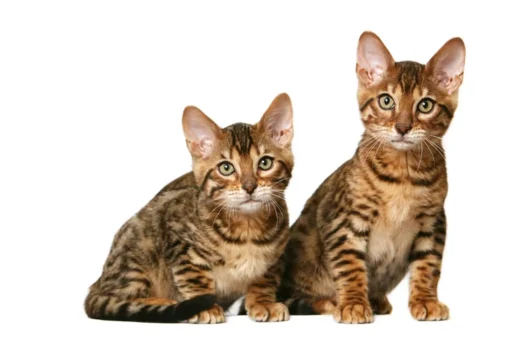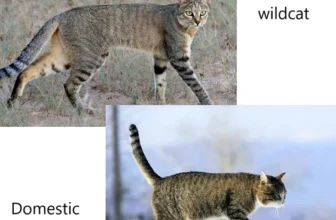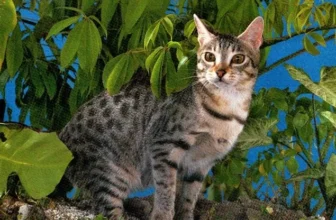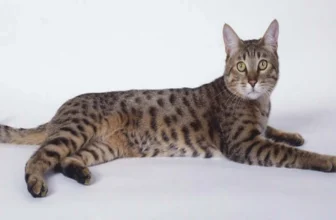Introduction
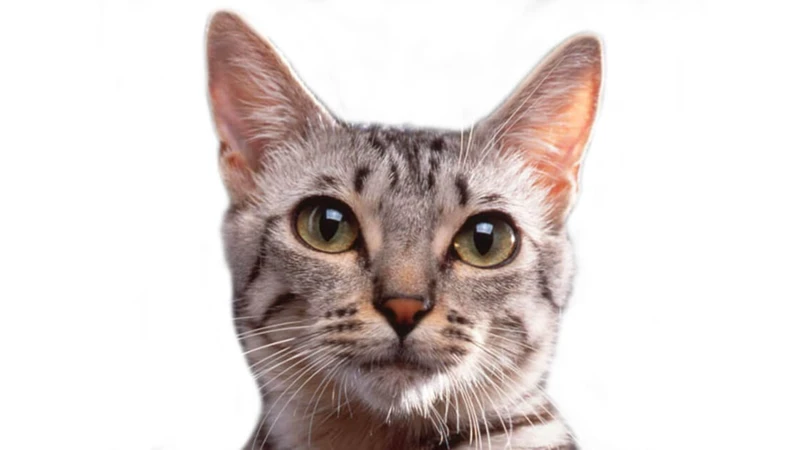
Throughout history, humans have always had a fascination with cats, from ancient Egypt to modern times. With over 100 recognized breeds, the domesticated cat has undergone a significant transformation since its wild ancestors. One breed that had a significant impact on the evolution of cat breeding is the California Spangled Cat. This breed’s rise to fame in the 1980s played a vital role in shaping contemporary cat breeding trends. In this article, we will explore how the California Spangled Cat came to be and how its popularity influenced the breeding of domesticated cats we know and love today.
The Origin of the California Spangled Cat
The California Spangled cat is a unique breed that was developed in the 1980s in the United States. The breed was created by a Hollywood scriptwriter named Paul Casey. Paul wanted to develop a breed of cat that looked like a wild cat but with a temperament suitable for domestication. Paul saw this as an opportunity to preserve the beauty of endangered wild cats while creating a new and exotic domestic breed.
California Spangled cats have a rich history, and their origin story is an interesting one. Paul Casey traveled around the world studying wild cats and their genetics. He wanted to find the perfect combination of DNA that would produce an exotic-looking cat with a friendly temperament. Eventually, he succeeded in his mission and created the first California Spangled cat.
The breed is known for its distinctive appearance, which resembles that of a leopard, with a golden-orange coat and black spots. Their eyes are large, round, and set wide apart, which gives them an alert, almost wild, appearance. Remarkably, despite their wild appearance, they are known to be affectionate, intelligent, and loyal pets.
The California Spangled cat’s genetics are fascinating. They are not a crossbreed; instead, they were selectively bred from various domestic and wild cat breeds. This created a unique breed that was different from its ancestors, combining the desirable features of long legs, an athletic build, and a friendly personality.
Despite the breed’s initial popularity, today, California Spangled cats are an endangered breed. However, their legacy still lives on, and they paved the way for other unique and exotic cat breeds. Their story is a rollercoaster ride of success and decline, but their contribution to the cat breeding world cannot be denied.
Interested in learning more about the wildly popular breed’s history? Check out this article about the rise and fall of the California Spangled cat. [source].
The Popularity of the California Spangled Cat in the 1980s

During the 1980s, a new cat breed emerged on the scene that quickly gained popularity and notoriety for its unique appearance and personality traits. This breed was none other than the California Spangled Cat, which many cat enthusiasts and breeders saw as a significant development in the world of cat breeding. This breed’s sudden rise to fame left many perplexed, and people wanted to understand what made these cats so special. Let’s delve into the reasons behind the California Spangled Cat’s popularity in the 1980s and what impact they had on cat breeding.
Why the Breed Rose to Fame
The California Spangled Cat was bred to resemble wildcats such as leopards and ocelots. Their unique appearance, combined with their affectionate personalities, quickly made them a popular choice among cat lovers. However, it was not just their visual appeal that made them stand out.
Their backstory is also quite intriguing. The breed was created in the 1980s by Hollywood scriptwriter Paul Casey. He was inspired to create a domestic cat that looked like a wildcat after seeing a sad, declawed cheetah at a zoo. He hoped that people would be less compelled to own wildcats if there was a domestic breed that closely resembled them.
Casey spent over a decade perfecting the breed, and the California Spangled Cat finally made its debut in 1986. The breed was immediately popular, with celebrities like Michael Jackson and Farrah Fawcett owning one. They were even featured in advertisements for products like L’Oreal and Paul Mitchell.
The California Spangled Cat’s unique appearance, combined with their celebrity following, made them highly sought after. Their popularity grew so quickly that breeders could not keep up with the demand. As a result, the price of a California Spangled Cat skyrocketed, with some cats selling for as much as $4,000.
While their fame was short-lived, the California Spangled Cat left a lasting impact on the world of cat breeding. Their legacy is evident in modern cat breeds, such as the Bengal and Savannah cats, which were also bred to resemble wildcats. Their impact on modern breeding is explored in more detail in this section of the article.
The California Spangled Cat’s rise to fame can be attributed to their unique appearance, compelling backstory, and celebrity following. Their popularity helped pave the way for other exotic-looking cat breeds, showing that there was a demand for more than just the traditional domestic shorthair. Unfortunately, as we will explore in the next section, their popularity was also their downfall.
The Breed’s Short-lived Popularity
After gaining immense popularity in the 1980s, the California Spangled Cat’s fame was relatively short-lived. It was a stunning breed with striking spotted fur and a truly wild look, but they quickly became expensive and difficult to obtain, which ultimately lead to their decline in popularity.
The decline of the California Spangled Cat breed in the late 1980s was due to several reasons:
| Reasons for the decline of California Spangled Cat breed | Explanation |
|---|---|
| Cost | The California Spangled Cat was an expensive breed to buy and maintain, making it difficult for regular cat owners to afford them. |
| Difficulty in breeding | The breed had a low fertility rate compared to other cat breeds, making them challenging to breed. The breed was vulnerable to genetic health issues. |
| Limited availability | The breed was only available through a few select breeders, with most of them located in the United States. Thus, acquiring a California Spangled Cat became increasingly challenging for cat enthusiasts outside of the country. |
| Trend shift | People’s interests began to shift towards newer breeds with more diverse colors and patterns. This trend change made many people lose interest in California Spangled Cats in favor of newer breeds, leading to a decline in the demand for them. |
Despite the decline in popularity, the California Spangled Cat’s legacy plays an important role in the history of cat breeding. With its striking features and unique coat, the California Spangled Cat is still remembered fondly by many cat enthusiasts around the world. You can read more about the rise and fall of California Spangled Cats’ popularity in the 1980s here.
The Impact of California Spangled Cats on Cat Breeding Today
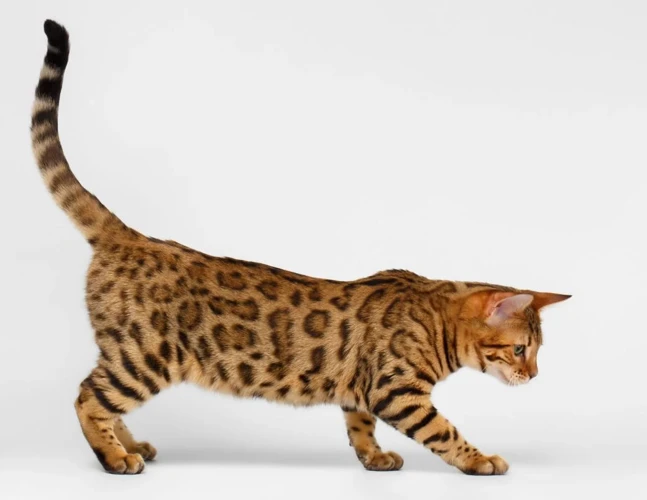
As we have learned in the previous section, the California Spangled Cat was briefly in the spotlight in the 1980s. While its popularity waned, its impact on the world of cat breeding still persists today. The California Spangled Cat’s unique appearance and temperament have left a lasting impression and continue to influence breeders all over the world. Let’s explore the legacy of this once-famous breed and its impact on cat breeding today.
Demand for Unique Breeds
In today’s world of cat breeding, there is an insatiable demand for unique and distinctive breeds that stand out from the common household cat. This trend can be traced back to the rise of the California Spangled Cat in the 1980s.
As people saw the California Spangled Cat’s distinctive markings and unique appearance, they began to crave more breeds that stood out in a crowd. This led to breeders experimenting with different coat patterns, colors, and body shapes to create the next trendy breed to capture the public’s attention.
As a result, breeders have created hundreds of new breeds since the California Spangled Cat’s heyday. Each one with their own unique set of characteristics that make them stand out from the crowd. From the curly-haired Selkirk Rex to the hairless Sphynx, cat lovers today have an abundance of choice when it comes to choosing a breed that reflects their personality.
This rise in demand for unique breeds also has a downside. Some breeders have begun to breed for looks over health, leading to a decline in the overall health and well-being of some breeds. A prime example of this can be seen in the business decline of California Spangled Cats following their initial popularity in the 1980s. The breed experienced a plethora of health issues as breeders focused solely on the cat’s appearance rather than their well-being.
Despite these concerns, the demand for unique breeds continues to rise, and breeders must find a balance between creating distinctive breeds and ensuring their health and well-being. Only by striking this balance can a new breed gain lasting success and shape the future of cat breeding.
Introducing California Spangled Cat Bloodlines into New Breeds
One of the most fascinating impacts of the California Spangled Cat on modern cat breeding is seen in how the breed’s unique characteristics have been introduced into other breeds through crossbreeding with the Spangled cat. This has led to some truly unique and sought-after breeds that have characteristics that can be traced back to the Spangled cat. Some examples of breeds that include California Spangled cat bloodlines are:
- Bombay cat: This breed was created by breeding a black American Shorthair with a sable Burmese cat, which also happened to have Spangled cat bloodlines. The result is a breed that has a jet black coat and striking golden eyes.
- Ocicat: This breed was developed by breeding a Siamese cat with a Spotted Oriental Shorthair that had some Spangled cat lineage. As a result, this breed has a distinctive coat pattern that resembles that of a wildcat.
- Toyger: This breed is another example of how the California Spangled cat’s unique appearance has been introduced into another breed. The Toyger is a cross between a Bengal cat and a domestic shorthair, with Spangled cat bloodlines. The result is a breed that resembles a mini-tiger, with bold stripes and a muscular build.
The process of crossbreeding to introduce California Spangled cat bloodlines into other breeds requires careful planning and consideration. Breeders look at the traits that they wish to enhance or introduce into a breed and then select a suitable Spangled cat to breed with. This requires both knowledge of the breed and the individual cat’s traits.
While the process of crossbreeding can lead to some truly unique and exciting cat breeds, it’s not without its challenges. In some cases, the resulting breed may have unexpected traits or health issues that need to be addressed. However, with careful planning and attention to detail, breeders can create amazing new breeds that are both beautiful and healthy.
Trends in Cat Breeding Today
As cat ownership continues to rise in popularity, so does the desire for unique and uncommon breeds. This has led to the emergence of new trends in cat breeding which are shaping the feline world today. From a focus on breeding for health and temperament to the introduction of new bloodlines, breeders are constantly innovating to stay ahead of the curve. Let’s take a closer look at the current trends in cat breeding that are driving the evolution of feline genetics.
Increasing Demand for Unique and Uncommon Breeds
As cat breeding evolves, we are seeing a growing desire for unique and uncommon breeds. This trend can be attributed to several reasons, including the desire for a pet that stands out and the search for a breed better suited to an owner’s lifestyle. Here are some factors contributing to the increasing demand for unique and uncommon cat breeds:
- Desire for a Stand-Out Pet: Many people want to own a cat that is not only adorable and cuddly but also a conversation starter. Unique breeds can provide just that. From hairless Sphynx cats to curly-coated LaPerms, these cats are sure to turn heads.
- Individual Lifestyles: Some cat owners are looking for a breed that is better suited to their individual lifestyle. For example, someone who travels frequently may be drawn to the independent nature of a Russian Blue, while a family with young children may prefer a playful and affectionate Bengal.
- Less Common Health Issues: Purebred cats, especially those with a smaller gene pool, can be more prone to genetic health conditions. By opting for a less common breed, cat owners may be reducing their risk of encountering such issues.
It seems that the desire for unique and uncommon cat breeds is here to stay. As more and more people realize the benefits of owning a one-of-a-kind feline companion, we can expect to see a continued increase in demand for these breeds.
Efforts to Breed for Health and Temperament
Cat breeding today has become more focused on breeding for the health and temperament of the cats. The emphasis on health and temperament has grown in response to the negative consequences of breeding cats solely for appearance. The inbreeding that often occurs to produce cats with certain physical traits can result in genetic disorders and health problems, which can ultimately lead to a shorter lifespan for the cat.
As a result, there has been a shift in the breeding practices of many cat breeders. They are now focusing on breeding cats that are not only visually appealing but also healthy and have a good temperament. This shift has been driven by the increasing demand for cats that are not only beautiful but also have a long and healthy life.
One of the ways that cat breeders are working to achieve this goal is by incorporating genetic testing into their breeding programs. Genetic testing can help identify genetic disorders that may not be visible in a cat’s physical appearance. By identifying these disorders early through genetic testing, breeders can avoid breeding cats that may pass on these disorders to their offspring. This can help ensure that the kittens born are healthy and free from genetic disorders.
Another way that breeders are focusing on health and temperament is by selective breeding. Selective breeding involves carefully choosing breeding pairs based on their physical traits, health, and temperament. By only breeding cats that are free from genetic disorders and have a good temperament, breeders can increase the chances of producing healthy and friendly kittens.
Breeders are also taking steps to ensure that their cats are raised in a healthy and stimulating environment. This involves providing cats with proper nutrition, regular vet check-ups, and plenty of socialization and playtime. By creating a healthy and positive environment for their cats, breeders can help ensure that their kittens will grow up to be healthy and well-adjusted cats.
The trend in cat breeding today is shifting towards breeding for health and temperament rather than solely for appearance. Breeders are incorporating genetic testing into their breeding programs, selectively breeding for health and temperament, and creating healthy and stimulating environments for their cats. These efforts are helping to ensure that future generations of cats will not only be beautiful but also healthy and happy.
| Efforts to Breed for Health and Temperament |
|---|
| Genetic testing |
| Selective breeding |
| Providing a healthy and stimulating environment |
Conclusion
Summing it up, the California Spangled Cat had a significant impact on the world of cat breeding, despite its short-lived popularity in the 1980s. Its unique appearance and fascinating ancestry captured the attention of breeders and cat lovers alike, leading to increased demand for uncommon breeds that stand out from the crowd.
Today, we see the influence of the California Spangled Cat in the introduction of new breeds that incorporate its bloodlines, such as the Savannah cat. As the demand for unique and exotic breeds continues to grow, it’s likely that we will see even more new varieties with California Spangled Cat ancestry.
However, it’s not all about appearance. The breeding community is also prioritizing health and temperament, with dedicated efforts to breed healthy, happy cats with well-rounded personalities. This is a promising trend that will hopefully lead to a more ethical and humane approach to cat breeding as a whole.
In short, the California Spangled Cat may have been a fleeting fad, but its legacy lives on in the world of cat breeds. It’s exciting to think about the potential for new and unique breeds that incorporate its ancestry, while still prioritizing the ethical treatment and well-being of our feline friends.
Frequently Asked Questions
What is a California Spangled Cat?
A California Spangled Cat is a domestic cat breed that was developed in the 1970s to resemble a wild leopard or ocelot. They have a short, spotted coat and a muscular build.
Why did California Spangled Cats gain popularity in the 1980s?
California Spangled Cats gained popularity in the 1980s due to their unique and exotic appearance, as well as endorsements from celebrities like Grace Jones and Brooke Shields.
What led to the decline in popularity of the California Spangled Cat?
The decline in popularity of the California Spangled Cat was due to a combination of factors including breeding difficulties, health issues, and the emergence of new exotic cat breeds.
What impact did California Spangled Cats have on modern cat breeding?
California Spangled Cats paved the way for the development of new and unique cat breeds, and their bloodlines have been incorporated into many modern cat breeds.
What is driving the demand for unique cat breeds today?
Many cat owners are looking for unique and uncommon breeds as a way to set themselves apart and express their individuality.
How are breeders working to improve the health and temperament of cats?
Breeders are using advanced genetic testing and selective breeding practices to identify and eliminate genetic health issues, while also socializing kittens from a young age to promote positive temperament traits.
What is the process for creating a new cat breed?
The process for creating a new cat breed involves identifying desired traits, selectively breeding cats with those traits, and then establishing a breed standard through registration and recognition from cat associations.
What are some popular exotic cat breeds today?
Some popular exotic cat breeds today include the Bengal, Savannah, and Sphynx.
What precautions should potential cat owners take when choosing a unique breed?
Potential cat owners should research the breed and its unique needs and health concerns before committing to bringing one into their home, and should ensure that they are buying from a reputable breeder.
Are there any ethical concerns with cat breeding?
There can be ethical concerns with cat breeding, particularly around issues of overbreeding, inbreeding, and genetic health issues. However, responsible breeding practices can help to minimize these concerns.

